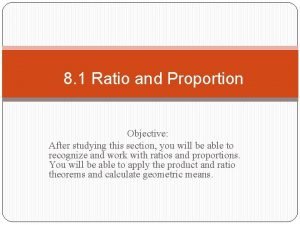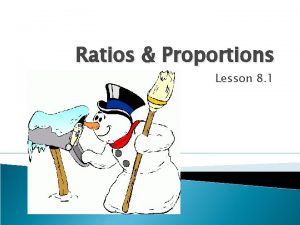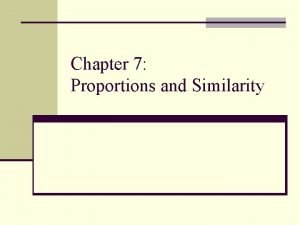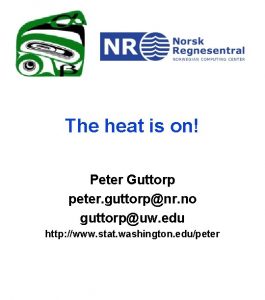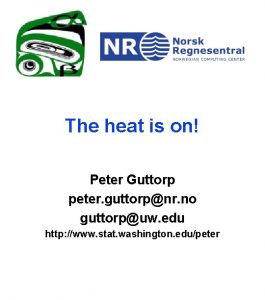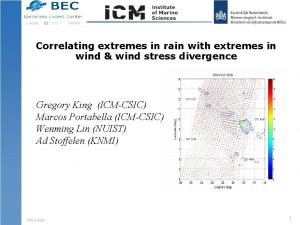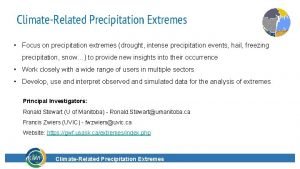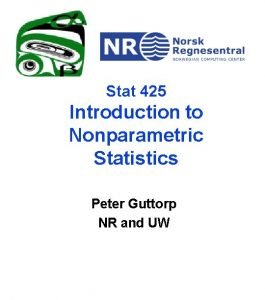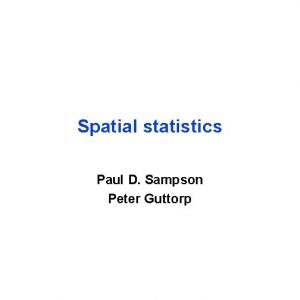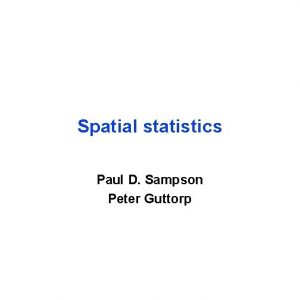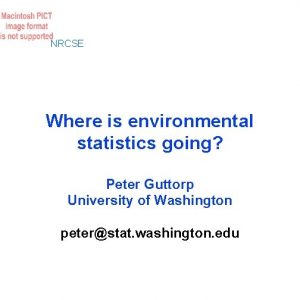Finding climate signals in extremes Peter Guttorp peter

















- Slides: 17

Finding climate signals in extremes Peter Guttorp peter. guttorp@nr. no www. stat. washington. edu/peter

Acknowledgements Anders Moberg for observed data Erik Kjellström for model data

Overview Observations Predictions The Stockholm series Comparing regional model output to weather data

Observed European trends 1901 -2000 Moberg et al. 2006

Trends in US record daily temperatures Meehl et al. 2009

IPCC model results (AR 4 WG 1 Ch. 11) Fewer frost days VL (consistent across model projections) Decrease in number of days with below-freezing temperatures everywhere Fewer cold outbreaks; fewer, shorter, less intense cold spells / cold extremes in winter VL (consistent across model projections) Northern Europe, South Asia, East Asia L (consistent with warmer mean temperatures) Most other regions Reduced diurnal temperature range L (consistent across model projections) Over most continental regions, night temperatures increase faster than day temperatures

The Stockholm series Stockholm daily 1756 -2004 Moberg et al. 2002 summertime correction miscalibrated thermometer screen painted white? urbanization

Trend in minimum temperature Block bootstrap, k=3, N=99

What is a minimum? Minimum daily average temperature Minimum daily temperature About 3°C lower, highly correlated (r=0. 95)

How about the maximum? No urbanization correction

Other series Uppsala Central England

Comparing climate model output to weather data Global models are very coarse Regional models are driven by boundary conditions given by global model runs In either case, describes distribution of weather, not actual weather Consider a regional model driven by “actual weather” Stockholm 50 km x 50 km grid, 3 hr resolution (SMHI-RCA 3; ERA 40)

How well does the climate model reproduce data?

Resolution in a regional climate model 50 x 50 km

Microclimate

Model problem? Cloud water content Downward longwave radiation Mean annual temperature about 1. 7°C higher in model than Stockholm series Should look at the part of simulation that predicts open terrain Use more regional series to estimate grid square average

References Bergström and Moberg (2002) Climate Change 53, 213– 252 Kjellström et al. (2005) Reports Meteorology and Climatology 108, SMHI Meehl et al. (2009) Geophys. Res. Lett. 36, L 23701, doi: 10. 1029/2009 GL 040736 Moberg et al. (2002) Climatic Change 53, 171– 212 Moberg et al. (2003) Int. J. Clim. 23, 1495– 1521 Moberg et al. (2006) JGR 111, D 22106, doi: 10. 1029/2006 JD 007103 Parker et al. (1992) Int. J. Clim. 12, 317– 342 Uppala et al. (2005) Quart. J. R. Meteorol. Soc. 131, 2961– 3012
 Animals and human language chapter 2
Animals and human language chapter 2 Difference between communicative and informative signals
Difference between communicative and informative signals Communicative and informative signals
Communicative and informative signals Climate change 2014 mitigation of climate change
Climate change 2014 mitigation of climate change Lewis terman ap psychology definition
Lewis terman ap psychology definition Bicultural couples tend to demonstrate extremes in
Bicultural couples tend to demonstrate extremes in Means and extremes
Means and extremes Means-extremes property of proportion
Means-extremes property of proportion What is the upper quartile of the data? 3 5 6 8
What is the upper quartile of the data? 3 5 6 8 Avoid extremes
Avoid extremes Similarity ratio definition
Similarity ratio definition Ratio theorem
Ratio theorem Equal ratio theorem
Equal ratio theorem Chapter 7 proportions and similarity answers
Chapter 7 proportions and similarity answers Means and extremes
Means and extremes Extremes of a proportion
Extremes of a proportion Arff hand signals
Arff hand signals Example of signal words
Example of signal words











